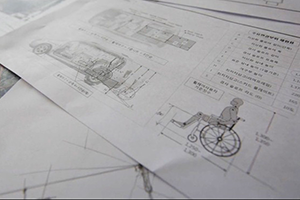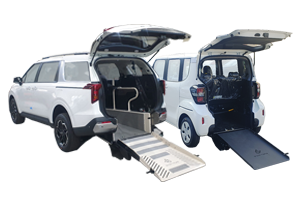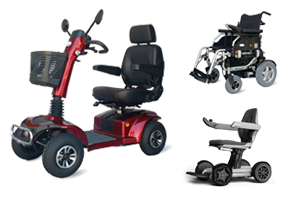You'll Never Guess This Infant Car Seat Uk's Tricks
페이지 정보

본문
 Choosing an Infant Car Seat in the UK
Choosing an Infant Car Seat in the UKCar seat laws in the UK oblige all children to use a car seat for their children until they reach the age of a certain height or age. Selecting the right car seat is essential to ensure the safety of your child.
Which?, the consumer champion has top rated baby car seats this rearward facing seat as one of the best. It comes with a baby-hugging insert and also enhanced G-Cell protection against collisions with the sides. It also comes with a rotation function that lets you adjust the seat to the best position for your vehicle.
Rear-facing
Rear-facing car seats for infants are designed to safeguard infants from neck and head injuries in a crash. Children who are in forward-facing car seats are seven times more likely to be seriously injured than those who use rear-facing safety seats. Car seats that are rear-facing for infants are usually placed on the back seat and are smaller and less heavy. It is recommended that you always use the rear-facing infant car seats uk car seat until your child has outgrown it or is at the weight or height limits for forward-facing use.
There are two kinds: convertible car seats and an all-in-one car seat. Both are safe for your baby, but each has its own benefits and disadvantages. Convertible car seats start with the rear facing, but can be turned forward once your child is large enough. All-in-one car seats have larger rearward-facing weight and size limitations so that your child is able to safely remain in the seat.
Be sure that the rear-facing seats you pick for your child are compatible with your vehicle and are properly installed. Check the manufacturer's labels and the owner's manual for your vehicle for directions on how to install the seat. You should also test the harness of the seat to ensure it is snug and secure, and also ensure your child doesn't fold in the harness. Additionally, you should try to avoid wearing bulky clothing that might interfere with the straps.
Rear-facing car seats are more secure for babies than forward-facing seats, as the force of the crash is more effectively dissipated when the infant is placed in the seat. Car seats with rear-facing windows also offer more protection for infants that are thrown during a collision on the side.
If your baby outgrows his or her rear-facing infant seat, you must consider switching to a convertible seat with a high rear-facing weight and a height limit. A majority of convertible car seats come with rear-facing limits that allow your child to use the seat for more than two years.
Forward-facing
If your baby is no longer in the rear-facing infant car seats, you can turn them around to face forward. However, you shouldn't do this until they've reached the height and weight limits set by the manufacturer of the seat. You should also talk with your child's doctor.
According to the laws of physics, and safety research, children under two are safer in a rear-facing seat. They will be able to relax more comfortably in their seat and are less likely to be injured by the belt or airbag. This is especially crucial for infants who's necks and bones still developing. The i-Size guidelines suggest that all toddlers and infants ride rear-facing until they are at least 20 pounds or 12 months old, and some experts recommend not waiting any longer.
If your child gets out of the rear-facing car seat it is possible to switch them to a car seat that's convertible or has a five-point safety belt. These seats are designed to accommodate your growing child and many come with an infant positioner that can be removed. These seats have a base, to allow them to be used on different vehicles. You can also buy additional bases if your car has more than one.
It is also recommended to use a car seat that has an adjustable headrest for infants up to 20 pounds. The headrest should be slightly angled back but not more than 300 degrees from vertical, and should cover the baby's ears. The baby's airway could be blocked in the event that the headrest isn't tilted back sufficiently. Additionally, the car seat should not be placed at an angle that could result in a herniated disc developing in the spine.
In the event of a crash, a young child can fall out of a forward-facing car seat, which could be fatal. A towel that has been rolled up or pillow can be placed under the base of the seat to make it recline further, which will help keep your child comfy in the car.
A rear-facing car seat can minimize leg injuries in collisions. In a frontal impact the legs of a child who is facing forward could fly up and hit the back of the seat, which can cause serious injuries. In a rear-facing seat, the child's legs will not strike the seat but will be cushioned by the harness. This greatly reduces the chance of injuries.
Multi-group
There are a lot of choices for infant car seats however, not all will meet the needs of your baby. A multi-group infant car seat will fit your baby from birth to around the age of 4 and is compatible with almost any pram. This type of seat includes a harness to protect your child, and it is designed to adapt to your child's needs and includes features like an adjustable headrest as well as side impact wings. Some of these seats can be turned within the vehicle to give your child a wider view of the road.
A new generation of infant car seats is built on height and not weight, making them safer for infants. The car seats, referred to as iSize or R129 in the UK they are approved by the EU and must meet the strict safety standards to be sold. The label will display a capital "E" in the form of a circle, and the letters "R129". These seats are easy to put in and offer greater protection against side-impacts.
The Group 1 or 0 car seat will be facing rearwards until your child weighs at least 9kg. After that they can be turned around to face forward. They have a harness, and are secured with either Isofix or the car seat belt. Some will have the ability to rotate, which means that you can move the car seat around without the need for a belt. Some are also able to fit on most prams.
A group 1/2/3 seat will keep your baby until they reach 11 years old and 100cm, or until you decide to make them an adult booster seat. Which? recommends these car seats as the safest. They have a wide design and a one-handed recline option and no less than 12 headrest positions. Some are built for travel infant car seat, with a lightweight carry handle designed to fit comfortably into the luggage of a.
Rotation function
One of the most significant features of an infant car seat is its rotating feature. It allows the part of the seat that is used to hold the infant to rotate on a separate basis, making it easier for parents to get the child into and out of the car. This feature is especially useful in vehicles with a trunk or backseat that is small. It can also make it easier to install a seat in another vehicle.
The rotating feature can also make it easier to access harness buckles without disturbing the sleepy baby, and it's an absolute godsend when you're trying to manage toddlers and take them to the car. Some rotating seats are not capable of achieving this. It's worth reading online reviews about specific models to learn how they perform.
A seat that can be used with strollers is another important feature. This is referred to as a travel system, and is ideal for new parents looking for a single product to guide them through the various phases of their child's development. It's also a great option for families with multiple cars, as they can easily change between them without disturbing their baby.
Infant Car Seat Uk car seats are designed to be used by babies and infants from one year age. They are grouped into four groups: Group 0, 1 3, and 4. The Group 0 car seats, which are sometimes called carrycots, put the child in a rear-facing position and connect to the vehicle with a standard seat belt or an ISOFIX fitting. The Group 1 infant car seat is usually attached to the vehicle's base using LATCH. This system connects most types of car seats.
 A seat in the group 3 category is usually a convertible car seat that grows with the child, starting from newborn to about four years of age. These seats come with an increased weight and height limit, as well as a headrest that is padded and adjustable, which helps protect the child in an accident. They also have an adjustable support wedge as well as a deluxe carrying handle, and a support bar that can be removed.
A seat in the group 3 category is usually a convertible car seat that grows with the child, starting from newborn to about four years of age. These seats come with an increased weight and height limit, as well as a headrest that is padded and adjustable, which helps protect the child in an accident. They also have an adjustable support wedge as well as a deluxe carrying handle, and a support bar that can be removed.- 이전글10 Key Factors On Mesothelioma Legal You Didn't Learn At School 24.09.14
- 다음글Guide To Huge U Shaped Sectional: The Intermediate Guide On Huge U Shaped Sectional 24.09.14
댓글목록
등록된 댓글이 없습니다.





